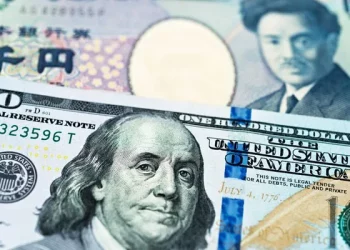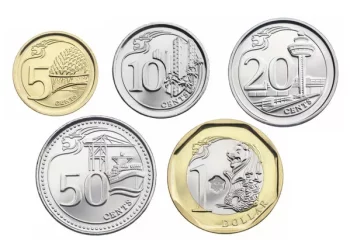The foreign exchange (Forex) market is one of the most dynamic and liquid markets globally, with trillions of dollars worth of transactions taking place every day. One of the most commonly traded currency pairs in the Forex market is the New Zealand Dollar (NZD) and the United States Dollar (USD). For those looking to exchange NZD for USD, timing can play a crucial role in determining the value you get from the transaction. This article explores the various factors that influence the exchange rate between NZD and USD and identifies the best time to exchange these currencies.
Understanding Currency Exchange Rates
Before delving into the best time to exchange NZD to USD, it’s essential to understand how currency exchange rates work. A currency exchange rate is the price at which one currency can be exchanged for another. In this case, the NZD/USD exchange rate shows how much one New Zealand Dollar is worth in terms of US Dollars.
Currency exchange rates are influenced by a wide array of factors, including economic data releases, interest rates, political stability, and market sentiment. These factors can cause the value of a currency to fluctuate, sometimes dramatically, within a short period.
Forex trading operates 24 hours a day, five days a week, because the market spans across different time zones. While this continuous availability is convenient for traders, it also means that exchange rates can vary significantly at different times of the day. The timing of your exchange can, therefore, have a major impact on the value of the NZD relative to the USD.
Key Factors That Affect the NZD/USD Exchange Rate
Several key factors influence the value of the NZD relative to the USD. These factors can help traders and individuals better understand market movements and determine the optimal time for currency exchange.
1. Interest Rates
Interest rates are one of the most powerful drivers of currency values. Central banks, such as the Reserve Bank of New Zealand (RBNZ) and the Federal Reserve (Fed) in the United States, set interest rates that directly affect currency values. Higher interest rates generally attract more investment into a country’s assets, which can increase demand for the country’s currency, pushing up its value.
For example, if the Federal Reserve raises interest rates while the Reserve Bank of New Zealand keeps rates unchanged, the USD may appreciate relative to the NZD. Conversely, if the RBNZ raises interest rates while the Fed maintains or lowers rates, the NZD may appreciate against the USD.
Changes in interest rate policies are often announced during scheduled meetings, and market participants tend to react quickly to these announcements. Understanding when these meetings occur can help you anticipate potential currency fluctuations.
2. Economic Data Releases
Economic data plays a significant role in shaping the outlook for a currency. Key indicators, such as GDP growth, employment figures, inflation rates, and trade balances, provide insights into the health of an economy and can influence the value of its currency.
For example, a strong U.S. employment report (such as non-farm payrolls) might indicate a robust economy, which could lead to a stronger USD. Similarly, better-than-expected GDP growth in New Zealand could boost confidence in the NZD, leading to its appreciation against the USD.
Economic data releases are scheduled well in advance, and traders often prepare for these events by analyzing the potential impact of the data on the currency markets. It’s important to monitor the economic calendar to track the release of key data that could affect the NZD/USD exchange rate.
3. Political Stability
Political events can create significant volatility in currency markets. Elections, changes in government policies, and geopolitical events (such as trade wars or conflicts) can lead to uncertainty, which can negatively affect a currency’s value.
For instance, if there is political instability in New Zealand or the United States, investors may seek safer assets, such as the USD, which is considered a safe-haven currency. This could cause the NZD to depreciate against the USD. Similarly, positive political developments, such as a trade agreement or economic reforms, can support a currency’s value.
4. Commodity Prices
New Zealand is a major exporter of commodities, including dairy, meat, and wool. As a result, the value of the NZD can be influenced by changes in global commodity prices. When commodity prices rise, it can boost New Zealand’s export revenues, which may lead to an appreciation of the NZD.
On the other hand, if commodity prices fall, the NZD could weaken against the USD as the country’s trade balance and economic outlook are negatively impacted. The USD, being the world’s primary reserve currency, is less sensitive to commodity price fluctuations than the NZD but can still be affected by broader market trends.
5. Market Sentiment
Market sentiment refers to the overall mood or risk appetite of investors. In times of global uncertainty, investors often move their capital into perceived safe-haven assets, such as the USD. Conversely, in periods of economic growth or stability, investors may be more willing to take on risk and seek higher returns, which can lead to increased demand for higher-yielding currencies like the NZD.
Market sentiment can change quickly, and its impact on the NZD/USD exchange rate can be dramatic. For instance, during times of economic crisis or geopolitical tension, the USD may experience an influx of demand, driving up its value against other currencies.
The Best Times to Exchange NZD to USD
Now that we understand the factors influencing the NZD/USD exchange rate, let’s explore the best times to exchange NZD to USD. Timing your exchange can make a significant difference in the value you receive, and being aware of key market hours and events can help you optimize your trade.
1. The Forex Trading Day: Key Trading Sessions
The Forex market operates 24 hours a day, but not all hours are equally active. The market is divided into three major trading sessions: the Asian session, the European session, and the North American session. Each session has its own characteristics and levels of liquidity, which can impact the NZD/USD exchange rate.
Asian Session (New Zealand and Australia)
The Asian session runs from 11:00 PM to 8:00 AM GMT, with New Zealand and Australia being the main contributors to trading activity during this period. Since the NZD is the currency of New Zealand, its value is most actively traded during this time. However, during the Asian session, the USD is not as actively traded, and liquidity may be lower compared to other sessions.
The Asian session is often considered less volatile, with smaller price movements, although this can sometimes present an opportunity for traders who prefer to trade in a more controlled market environment.
European Session (London)
The European session runs from 7:00 AM to 4:00 PM GMT. This is one of the most active times for currency trading, as it coincides with the opening of major financial markets in Europe, including London, which is one of the largest financial hubs in the world. The European session sees high liquidity, and the NZD/USD pair can experience notable price movements.
For those looking to exchange NZD to USD, the European session can offer more opportunities to take advantage of larger price fluctuations. Additionally, this session overlaps with the Asian session towards its latter half, allowing for increased market participation.
North American Session (United States)
The North American session runs from 12:00 PM to 9:00 PM GMT. This session is particularly important because the United States is one of the world’s largest economies and a dominant player in global financial markets. As a result, the USD is most actively traded during this time.
The North American session tends to see the most liquidity and volatility, particularly during important news releases, such as U.S. economic data or Federal Reserve announcements. For traders looking to exchange NZD to USD, this session often presents the most opportunities for price movement, as the USD reacts to economic data releases and market sentiment.
2. Economic Data and Central Bank Announcements
As mentioned earlier, the release of key economic data and central bank decisions can significantly impact the value of the NZD/USD pair. Traders should pay close attention to economic calendars and central bank meetings for both New Zealand and the United States.
For example, the U.S. Non-Farm Payrolls report, released on the first Friday of every month, is a major event that can influence the USD. Similarly, New Zealand’s GDP and trade balance data can provide valuable insights into the country’s economic health and impact the NZD’s performance against the USD.
3. Avoiding Holidays and Low Liquidity Periods
Certain times of the year, such as public holidays or periods of low trading activity, can result in lower liquidity and wider spreads in the Forex market. During these times, exchange rates can become more erratic, making it more difficult to secure favorable rates.
It’s generally advisable to avoid exchanging currencies during major holidays or when global markets are closed. For instance, the end of the year (particularly around Christmas and New Year’s) can see lower trading volumes and less predictable price movements.
Conclusion
The best time to exchange NZD to USD depends on various factors, including the time of day, economic data releases, and central bank announcements. Generally, the most liquid and volatile periods are during the overlap of the European and North American trading sessions, where high levels of trading activity and news flow can lead to more favorable exchange rates.
Traders and individuals looking to exchange NZD for USD should monitor the Forex market’s key trading hours, economic events, and market sentiment. By staying informed and carefully selecting the right time to trade, you can maximize the value of your currency exchange and mitigate the risks associated with unfavorable price movements.
Lastly, it is important to remember that Forex markets are complex, and timing your exchange is just one of many factors to consider when trading currencies. Whether you are trading professionally or exchanging currencies for personal use, a well-researched and strategic approach can make a significant difference in the outcomes of your transactions.
Related Topics:




























